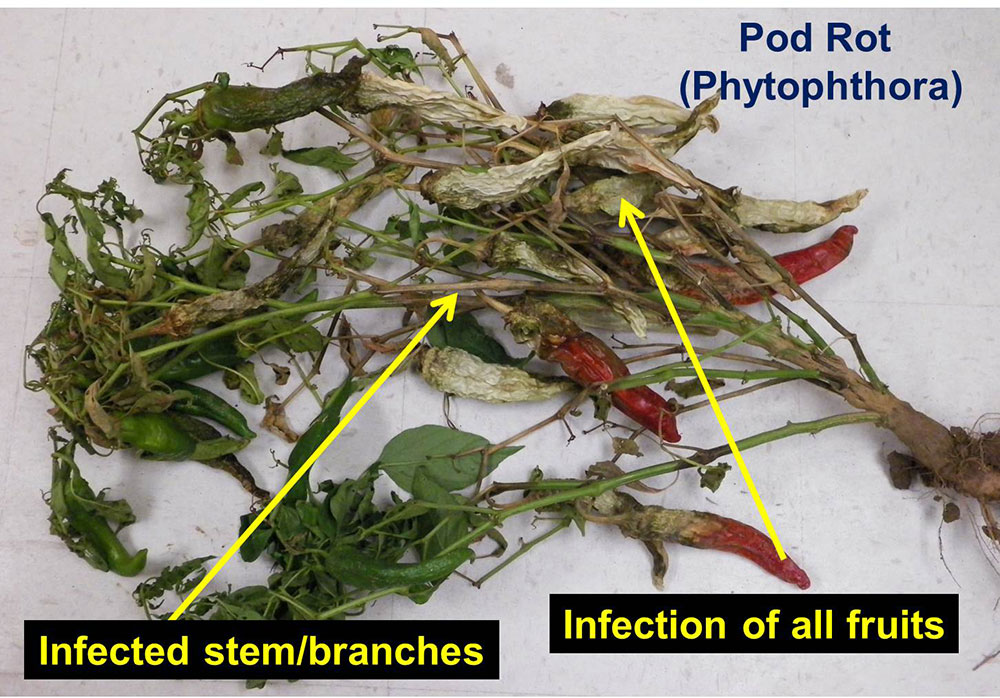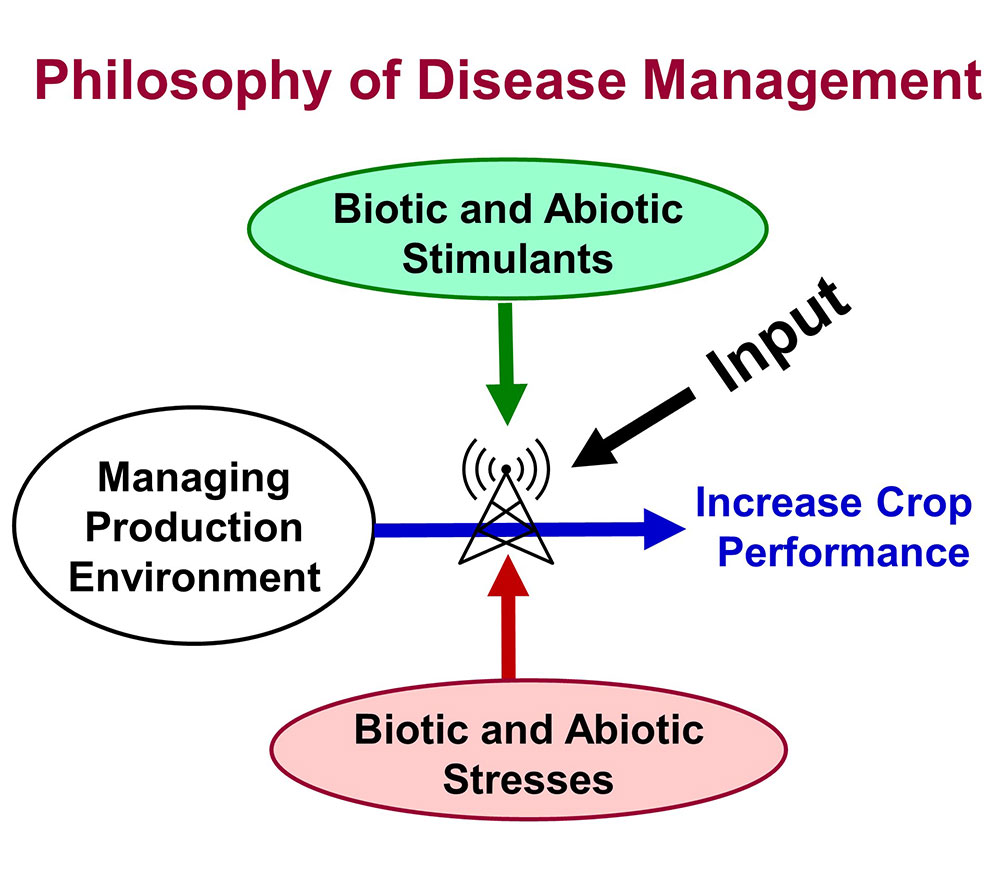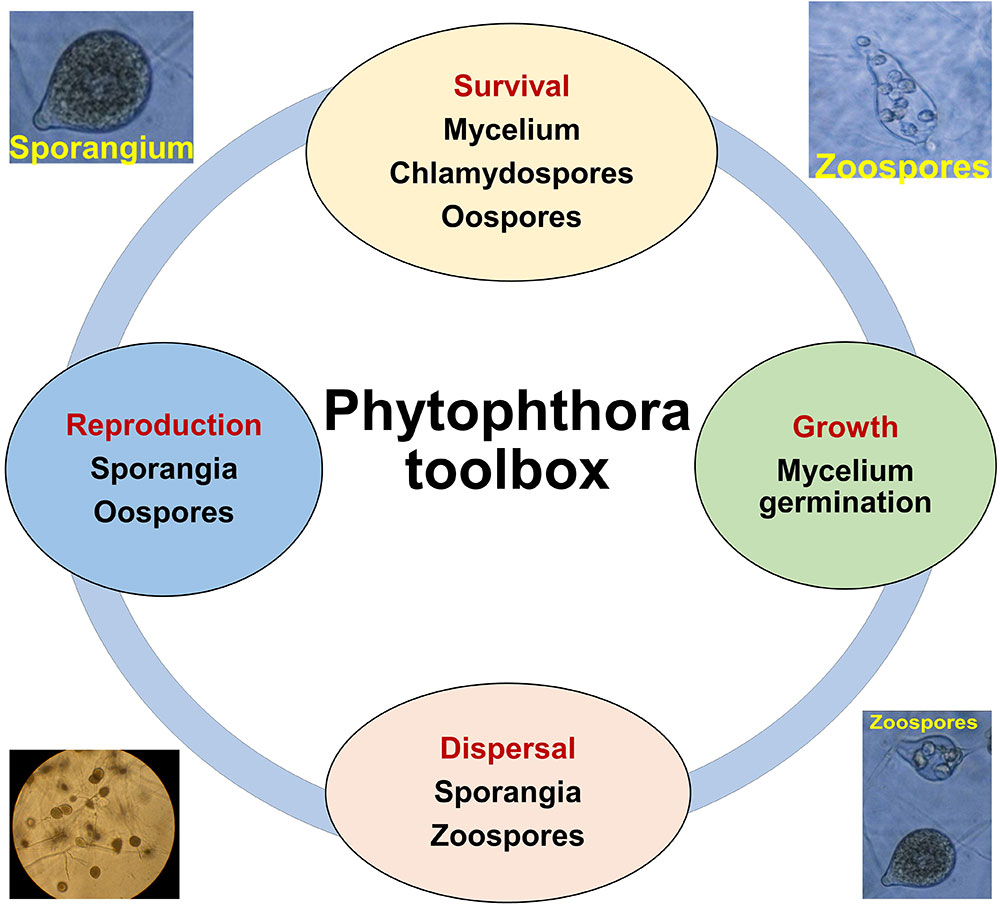Dr. Soum Sanogo visits a local vegetable farm affected by Phytophthora blight. His guest Vince Hernandez, a local company agronomist, addresses the economic effects the disease has on vegetable growers.
Dr. Soum Sanogo discusses Phytophthora blight research conducted at the Soilborne Disease Research Laboratory at the Entomology, Plant Pathology, and Weed Science Department at NMSU.
This simulation of the life cycle of the fungi-like organism Phytophthora explains the mechanism behind Phytophthora blight. Diseased crops due to Phytophthora can be devastating to chile producers in the Southwest US.
The USDA has identified vegetable crops as challenged specialty crops. Peppers and cucurbits are important cash crops with an annual farm gate value of over $2 billion in the United States. The profitable and sustainable production of peppers and cucurbits is severely impacted by a destructive soilborne disease, Phytophthora blight, caused by the pathogen Phytophthora capsici. Symptoms of Phytophthora blight include root rot, crown rot, leaf and stem lesions, fruit rot, and complete plant blight, resulting in significant yield loss. This disease inflicts up to 100% crop losses in favorable environmental conditions if left uncontrolled. In addition to damage in the field, fruits that do not show symptoms when harvested may rot in storage and transit. First reported on chile pepper (Capsicum spp.) in New Mexico in 1922, Phytophthora blight has become extremely damaging on peppers and cucurbits in most of the growing areas in the US, especially in the Southeast, Southwest, Mid-Atlantic, and Midwest regions. The disease has also been reported in several countries outside the US. For more information on this disease, see the publication: “Phytophthora capsici, 100 years later: research mile markers from 1922 to 2022.”

Phytophthora capsici is a pathogen that causes severe damage to several vegetable crops. The success of the pathogen is due to the fact it possesses a powerful toolbox, which contains many structures that allow it to survive, grow, spread, and reproduce.
Extensive research has been conducted over the last 100 years to determine the effects of i) environmental variables including soil factors, ii) irrigation, iii) host plant resistance, and iv) fungicide application on the biology and management of P. capsici.
This pathogen remains a serious risk in the production of many crops. Combinations of strategies are critical for effectively managing Phytophthora blight. For more information on this disease, see the publication: “Phytophthora capsici, 100 years later: research mile markers from 1922 to 2022.”


This work is funded in part by the Specialty Crop Research Initiative (SCRI), Administered by the U.S. Department of Agriculture’s (USDA) National Institute of Food and Agriculture (NIFA), award #13886442.

©2023 NMSU Board of Regents. All rights reserved. ACES is an equal opportunity, affirmative action employer and educator. NMSU and the U.S. Department of Agriculture cooperating.
